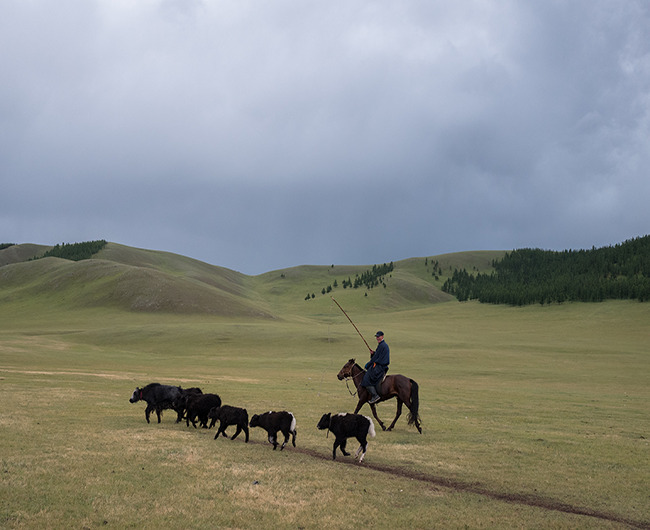Context
Occupying 80% of Mongolia’s territory, some 800.000 of its 3.3 million inhabitants depend directly on semi-nomadic livestock farming for their livelihood. The sector suffers from severe pasture degradation, accentuated by the explosion in the number of cashmere goats, extreme climatic events and a lack of diversity in market opportunities. For the rural population, this generates considerable income insecurity. Important elements of the infrastructure needed to support livestock production systems, are lacking.
With the aim of supporting traditional Mongolian nomadic livestock farming, while ensuring the preservation of steppes biodiversity and the supply of healthy, locally-produced food to urban dwellers, the diversification of herders’ sources of income by adding value to meat products has been identified as a priority.
The project will be implemented in four soums of the Bayankhongor province. This is a semi-arid zone where herders live mainly from the marketing of their cashmere, and where the inclusion of herders in a new economic model, with destocking of animals to sell their meat on a more remunerative market, seems promising.
Methodology
The project will use the principle of creating economic value as a guiding principle to engage herders in a virtuous circle including structuring, improving production quality and sustainable pasture management. Thereby improving their livelihoods, in a complete break with the destructive trend of recent decades.
The project adopts an innovative approach on several levels:
✓ Enhancing the value of goat meat, contributing to the objective of regulating herd size and combating desertification.
✓ Operational, anchored in the field
✓ Participatory & multi-stakeholder
✓ One Health: improving the triptych of animal health – consumer health – environmental health.
Objectives
1. The sanitary quality of meat produced by herders from 4 target cooperatives in 1 Bayankhongor meets standards for human consumption.
– 40 herders’ collectives (620 herders) can monitor the health of their herds
– 8 clinics equipped for veterinary monitoring and health traceability
2. The “Origin Bayankhongor” meat chain has been structured to ensure a sustainable 2 supply of meat to urban centers, in compliance with stringent specifications.
– Increased sales for cooperatives as a result of their involvement in the meat chain
– Improved pasture management in the target area
3. Stable, remunerative outlets for nomadic meat producers who are members of the 3 target cooperatives.
– Increased gross margins for meat producers
– 4 cooperatives certified to the Responsible Nomad standard











